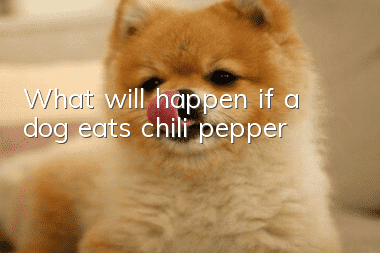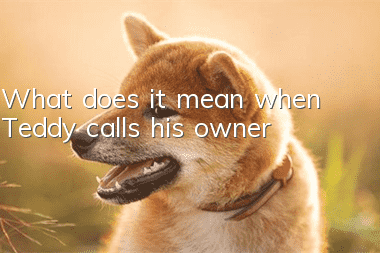What causes twitching in dogs? Dog twitching should not be underestimated

Common causes of convulsions in dogs
1. Heatstroke. Dogs are active under strong sunlight, such as walking, training, and playing; dogs are kept in closed indoors, dog cages, and cars for too long, causing heat stroke due to excessive temperature, poor ventilation, and lack of drinking water; dogs are obese, Dogs with heart disease, thick coats, and lack of exercise are also prone to heatstroke.2. Poisoning. Such as rat poison poisoning and pesticide poisoning.
3. Hypoglycemia in dogs. This condition mainly occurs in puppies and female dogs. Puppies under 3 months old often suffer from temporary hypoglycemia, which is caused by cold, hunger or gastrointestinal disorders. The puppy showed depression, unsteady gait, facial muscle twitching, body spasms, and soon fell into a coma. Female dogs often get sick due to giving birth to too many litters, resulting in increased nutritional needs and large amounts of lactation after delivery. The disease manifests as muscle spasms, unsteady gait, general tonic or intermittent spasms, body temperature rising to 41 to 42 degrees, and breathing problems. ,Rapid heartbeat.
4. Canine distemper. This is a common infectious disease in dogs.
5. Postpartum cramps. It mostly occurs in small dogs, with lion dogs being the most affected, especially in the first and second litters. Female dogs with a litter size of more than 4, high lactation volume, and excitable female dogs have a higher incidence of the disease, while those with a litter size of less than 3 are less likely to suffer from the disease.
6. Encephalitis and meningitis. Inflammation of the meninges and brain parenchyma is caused by infection or toxic factors, including various brain infections and brain diseases.
How to deal with dog convulsions
The most common cause of dog convulsions is epileptic seizures. The dog appears stiff and convulsing. The dog appears restless before the attack. The main manifestations are teeth clenching and chewing, and lips turning. Post-retraction, foaming in the mouth, collapse and coma, incontinence of urine and feces, kicking the legs.When this happens, the dog owner should handle it as follows.
1. Place the dog in a safe, comfortable place, keep it cool and quiet.
2. Cover with a blanket and avoid touching the floor, walls and other hard objects until the attack subsides to prevent trauma.
3. When a dog becomes stiff, the mucus in the mouth and nose should be removed promptly during the gap period to keep breathing smooth. Remove feces and urine at the same time.
4. Give drinking water but reduce the amount of food. Let the sick dog rest in a quiet environment and send it to the doctor as soon as possible.
Random articles
- How to feed French Dou to gain weight
- Why doesn’t the dog run away after being beaten? Don’t you want to cry after reading the answer?
- If your dog doesn’t treat you as its master, you are just a poop scooper in its eyes.
- Do dogs have double eyelids? Are dogs cuter with double eyelids?
- Dog hair care knowledge in autumn: Do this to keep your dog’s hair silky!
- Can puppies eat adult dog food? Be careful of malnutrition!
- How to tell if a wound is a dog bite? Dog bite wounds have obvious characteristics!
- Why you can’t look at dogs. Don’t look at strange dogs casually anymore!
- The dogs closely guard their twin owners and never relax for a moment
- How to treat dog beans if they occur in humans? Pay attention to treating dog beans together!



